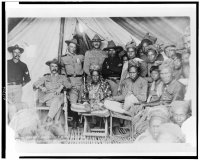OneManGang
Senior Member
- Joined
- Sep 7, 2004
- Messages
- 2,003
- Likes
- 9,492
Tennessee vs The Maxims vs Purdue vs The Music City Bowl
First off, I sincerely hope everyone had a wonderful Christmas and that Ol' St. Nick pulled a muscle delivering gifts to you! Also, let me take a moment to wish one and all a very happy and healthy 2022!
There was a running tongue-in-cheek joke on the old TV series Seinfeld dealing with something called a “Festivus Pole” which one held while participating in “The Annual Airing of Grievances.” It was a sort of sideways acknowledgment that most of the characters on the show were Jewish and therefore were not fully vested in a traditional Christmas.
It dawned on me that I had taken hold of the “Volifus Pole” during our last visit when discussing facilities at Neyland Stadium.
There are a few other things that need to be said before I set the Pole aside for yet another season.
I have held forth in other reviews that the NCAA and the conferences need to raise the level of officiating by making them professionals held to professional standards. This was shown in stark relief during the Music City Bowl.
I find the saturation of commercials touting this or that betting site to be somewhat off-putting. But then, I am of a generation that remembers that using the words “NFL” and “betting” in the same sentence would find Pete Rozell in your living room asking just what you knew and when did you know it. The idea of an “official” betting site for the NFL is just weird to us. To those of you participating in such activities, not that there's anything wrong with that, just remember that there's a reason they can afford all those ads: the House always wins.
On a similar theme, with MLB also endorsing these sites, there is no reason to keep Pete Rose out of the Hall of Fame. Charlie Hustle earned it on the field.
The recent introduction of “NIL” payments to college athletes is troubling to the extent that schools are not equipped to handle this and it will eventually and inevitably lead to scandal. Personally, I have no issue with compensation for athletes who bring in literally $millions to their schools and $billions to the conferences and the NCAA. HOWEVER, there must be strict controls on the sources of such income. (See discussion above.) The people who run those betting sites didn't get where they are by rescuing puppies and building hospitals.
The “transfer portal” is also a concept that at its base is long overdue. The way it was, with coaches able to change schools more often than changing their underwear while a student-athlete who wanted to transfer from Whatsamatta U. to Double Dome State had to sit out a year was simply unfair. In practice, though, it has proven to be devastating to some programs (See: Tennessee, University of) whilst enriching others. The governing body for college athletics seems to have simply thrown up its hands and is now whistling past the graveyard whilst the inmates take over the asylum.
With that, I pass the Pole to the next contestant.
*******
The war had started out splendidly.
Overwhelming American superiority in firepower and organization had made it look easy. Soon the foreign territory was occupied … and then the trouble began. The native peoples wanted the US gone and were fighting American forces tooth and nail to make that happen. The most violent of the rebels were Muslim warriors raised on a diet of Islam and Jihadist principles.
Compounding the problems for the Americans was the dispersed nature of the Muslim command structure. Simply put there was no individual in charge. US intelligence identified man after man as the “head guy” who would be dealt with but then replaced almost immediately by somebody else.
Frustrations mounted.
Now, four years later, with some two-thirds of the US Army committed to putting down the guerrilla rebellion, prominent voices in the media, academia and Congress were condemning the effort and advocating withdrawal. Worse, a Congressional investigation into the conduct of the war, in a 3000-word report, detailed war crimes and cruelties committed by American forces, particularly the use of water torture during questioning.
Iraq after the 2003 invasion?
Nope, the Philippines after the Spanish-American War.
Bridge of USS Olympia, Manila Bay, 0535 Hours, 1 May 1898
There are two entrances to Manila Bay. The Spanish Pacific Flotilla under Rear Admiral Patricio Montojo slept comfortably imagining themselves perfectly safe from the oncoming Yanqui ships until later in the day as both passages were not only mined but also the navigation charts were secured in Manila itself.
What the Spaniards failed to take into account was that the American Consul in Manila, one Oscar Williams, was an industrious chap who managed to secure copies of the relevant charts and pass them on to the Navy. He also provided the locations of Spanish forts and shore batteries guarding the entrances. Oh, and the Spanish mines were placed too deep to have any effect.
As Olympia entered the harbor itself, she found the Spaniards desperately raising steam and trying to get underway. At 0541, Commodore George Dewey, commanding the Asiatic Flotilla of the US Navy, turned to Captain Charles Gridley and uttered an order that remains a part of Navy lore to this very day, “You may fire when ready, Gridley.”
Olympia and the other five ships of Dewey's flotilla did open fire. Montojo's ships died under an avalanche of some 8,000 6-inch and 5-inch rounds. Montojo had entertained the idea of trying to ram the Yanquis but none of his ships even came close. The Spanish flotilla was designed to cow the locals, not take on a modern and well-trained opponent. At 1240, with his little fleet reduced to so much burning and sinking scrap metal, Montojo struck the colors.
The Americans suffered but one fatality, a sailor on board one of the unarmed ships waiting outside the bay. He suffered a fatal heart attack.
The US Navy had acquitted itself brilliantly at Manila Bay and at Santiago Bay in Cuba. Their victory complete, the Navy turned its attention to battling its true foe, the United States Army. These battles would take place among the reefs and shoal waters of Congress.
American advertisers were quick to jump on the bandwagon churning out 4-color ads for magazines which featured brave American tars relaxing while quaffing the subject libation or treating their scratches with whichever snake oil with the Spaniards sinking in the background. Fear? That was for the other guy. Anyone who has ever read a word about surface naval combat, or worse, lived through it, knows that was a load of what Farmer Brown hauled away. But the public ate it up.
Once the paperwork was signed and the diplomats finished congratulating each other, the Philippines switched from being a Spanish colony to become an American colony.
There had been a Filipino insurrection against the Spanish led by a some time mayor named Emilio Aguinaldo. Aguinaldo became el jefe of the rebels by the time-honored revolutionary method of capturing his main rival, accusing him of treason, holding a show trial and executing the poor sod. Far from being the “Asian Lincoln” as his apologists depict him, Aguinaldo proclaimed an independent Philippines and named himself dictator. The Spaniards were never really threatened by him but it was a running sore that they could ill afford.
The Americans were initially greeted as liberators until it became clear the Yanquis had no intention of leaving. Indeed, there were several European powers casting greedy eyes on the islands. Therefore, having drunk deeply of the “white man's burden” claptrap of the era, the US government decided to annex the Philippines to “protect” their “Little Brown Brothers” from outside influence until they were ready for self-government.
The Filipino rebels now turned their attention to fighting the new colonial masters and by early 1899, open warfare was taking place all over the main island of Luzon. Ambush and the murder of isolated Americans became the order of the day with the guerrillas melting away before American firepower could be brought to bear.
By 1902, there were 120,000 American troops in the islands, two-thirds of the Army's authorized strength. Over 2,000 Americans and upwards of 100,000 Filipinos had died during the fighting. With no end in sight the frustrated troops sang bitterly:
Damn, damn, damn the Filipino
Pock-marked Kodiac ladrone (bandit)
Underneath the starry flag
Civilize him with a Krag (the .30-40 Krag-Jorgenson rifle)
And return us to our beloved home.
Eventually, Aguinaldo was captured and persuaded to sign a peace treaty recognizing American control of the islands.
However, this treaty had no effect on the second-largest island, Mindanao, with a substantial population of Moro tribes. Here the local government, such as it was, was vested in a few Sultans but the real focus were the dozens of local warlords called Datus. The Sultans tended to leave the Datus alone as long as they paid their annual tributes and never questioned where the money came from. For their part the Datus and their subjects had been engaging in the slave trade, piracy, pillaging, murder and cattle rustling for centuries. The Datus' power rested on the spears and wavy Kris swords of their troops who had been convinced by the local Muslim clerics that there was no quicker way to Paradise than to die fighting for Allah. Worked into a frenzy of blood lust by those same clerics, the Moros would assault any position heedless of casualties and defend their forts until they were annihilated. When the Americans showed up the Moros merely shifted to slicing up isolated Americans and then retreating to their well built and defended forts called cotas. The most formidable of these ringed Lake Lanao, a 450 square-mile body of water near the north coast of Mindanao.
4 July 1902, Camp Vicars, Mindanao
His men thought he was nuts. 42 year-old Captain John J. Pershing had invited several local Datus and their troops numbering over 700 into Camp Vicars to share in the celebration. He treated them with respect. The Moros were amazed at a game the Americans played where one man threw a ball at high speed at another who was armed with a stick. The Datus were convinced and several signed treaties declaring allegiance to the American government and promising to no longer wage war. Pershing didn't want to have to fight any of them if it could be avoided. “Civilize him with a Krag” was the last resort. Diplomacy and force when necessary would be his strategy.
Pershing was able to exercise such discretion because his nominal boss, one Col. Baldwin, had led a column into a Moro ambush from which only a few were able to escape with their lives. Baldwin soon decamped to the rear ordering Pershing to take care of things.
However, attacks did continue by other Moros. Pershing decided to end this. He would march around Lake Lanau, taking the cotas or negotiating their surrender. He first marched on the cota at Maciu which was located on a promontory connected to the mainland by a narrow strip of land surrounded by swamps. The local Datus considered it impregnable. The Maciu Datu's flags flew from the ramparts and the warriors inside beat drums and chanted insults at the Americans. Pershing ordered a road to be hacked through the jungle and soon had artillery in position along with dug-in infantry. He ordered the howitzers to start dropping shells into the fort. Finally, the enraged garrison of the fort, some 600 Moro warriors, boiled out and charged. Massed rifle volleys and canister from the cannon blasted the Moros. The next day, both the Moros and their flags were gone from the fort. Pershing waited, though, and it paid off. Several hours into the day a dozen or so clerics rose as one out of the moat and were swiftly cut down. The fort at Maciu now flew the American flag. As a result the local Sultan and even more Datus signed at the places indicated. The Sultan named Pershing a Datu in recognition of his skills.
Pershing, by now it was early 1903, worked his way around the lake, reducing cota after cota. Finally, he came to the cota at Bacolad which was also considered to be too strong to be taken by assault. Pershing also knew he was working against the clock. The longer any siege of Bacolod went on, the more likely other Sultans and Datus in the area would take up arms. Pershing planned his assault well and soon the massive fort fell at a total cost of a handful of Americans wounded.
He kept pushing his men onward. Next, they came to the cota at Calahui. Having seen what happened at Bacolod, the local Sultan surrendered without firing a shot.
Pershing took the last three forts and completed his march around Lake Lanao. It was a great example of what careful planning and knowledge of the local customs could achieve. President Theodore Roosevelt was impressed. He was so impressed he jumped Pershing over the heads of over 800 more senior officers and made him a Brigadier General. He was sent as an observer to the Russo-Japanese War of 1905 and came away impressed at the lethality of the then-modern weapons employed by both sides.
Pershing returned to the Mindanao as Military Governor in 1909 and in 1913 led the final battle against some 500 hard core Moros dug in on Mount Bagsak. His success there effectively ended the Moro uprisings.
On 10 May 1917, Pershing assumed command of the American Expeditionary Force in France which would eventually number over 2 million men. His men would come to refer to him as the “Iron Commander.”
The Moros of Mindanao in recognition of this bestowed another title on him.
They made him a Sultan.
********
So, how did the Vols do against The Maxims?
1. The team that makes the fewest mistakes will win.
Tennessee did exactly what they have done over and over this season. They stormed out of the gate and built up an early lead and then for whatever reason decided that the game was won. Purdue did not share that view.
2. Play for and make the breaks. When one comes your way … SCORE!
Three picks by the Vols led to scores. Unfortunately, that was offset by Purdue throwing for a couple of miles and five touchdowns. Simply put, they made a bloody hash of UT's secondary. Throw in four pass interference calls and the failure was complete.
3. If at first the game – or the breaks – go against you, don't let up … PUT ON MORE STEAM!
Maybe, HeadVol Heupel needs to let the other team score first to convince his charges that they need to play the second and third quarters?
4. Protect our kickers, our quarterback, our lead and our ballgame.
Note to Heupel and Company: It was UT 21 Purdue 7 at the end of the first quarter. At half itr was UT 21 Purdue 23. that equals failure. Hendon Hooker's jersey looked like he'd spent two weeks on the Western Front. He was hurried, sacked, and had the ball knocked out of his hand twice. That equals FAIL.
5. Ball! Oskie! Cover, block, cut and slice, pursue and gang tackle … THIS IS THE WINNING EDGE.
Cover? COVER?? Good Lord, there were times Vol fans were delighted to simply see a Vol defender in the same frame as a Purdue receiver.
6. Press the kicking game. Here is where the breaks are made.
Other than not doing anything to add to Tennessee's woes, there is simply not much to say here. It never should have come down to a 56-yard field goal attempt at the end of regulation.
7. Carry the fight to Purdue and keep it there for sixty minutes,
30 ≠ 60. This has got to be fixed before next season,
Many on this board and elsewhere have stated that Tennessee was “exposed” as being not quite as good as we thought. Considering that the entire SEC is in the process of being exposed – the Conference has but ONE win so far in the bowl season – we are not alone.
All that said, there are many positives to reflect on during the off season. Tennessee has a proven quarterback, many experienced linemen and defensive players and did a decent job during the early recruiting season. One shouldn't expect an SEC championship next year, but continued improvement would be nice. After 15 years of disappointment and failure, that would be a wonderful outcome.
My friend @peaygolf is doing a countdown of his 250 best Vol players, Hie thee over to that thread and give him a like!
As for me, God willing and the Creek don't rise, I will return with more of these meanderings after the 2022 opener against Ball State.
See you all then, and many, many, thanks for your kind comments and your support!
GO VOLS!
Suggested Reading
Thomas Fleming, Pershing's Island War. American Heritage Magazine, August, 1968
Donald Smythe, Guerrilla Warrior: The Early Life of John J. Pershing
Frank E. Vandiver, Black Jack: The Life and Times of John J. Pershing, Vol. 1
Capt. Pershing (second from left, back row, next to man leaning on post) at Camp Vicars with Moro Sultans and Datus (Library of Congress)






